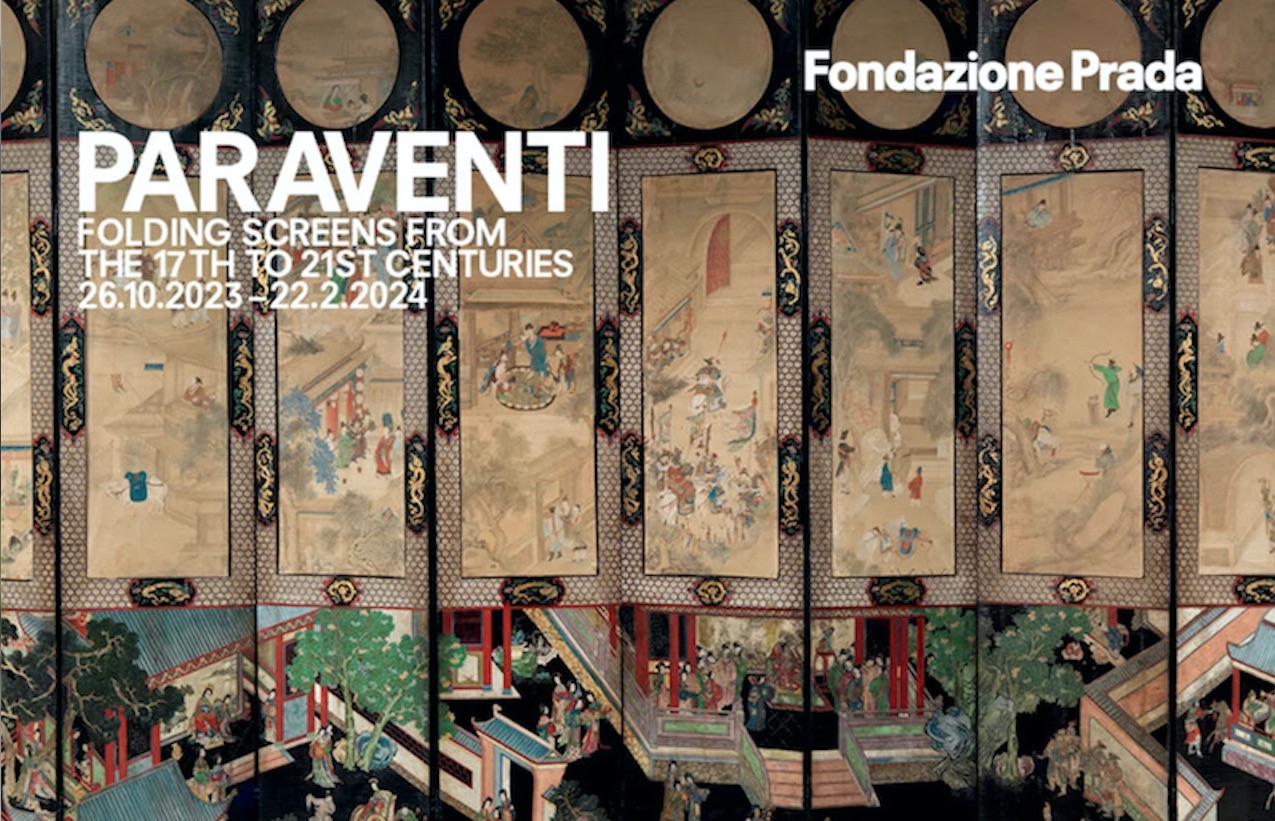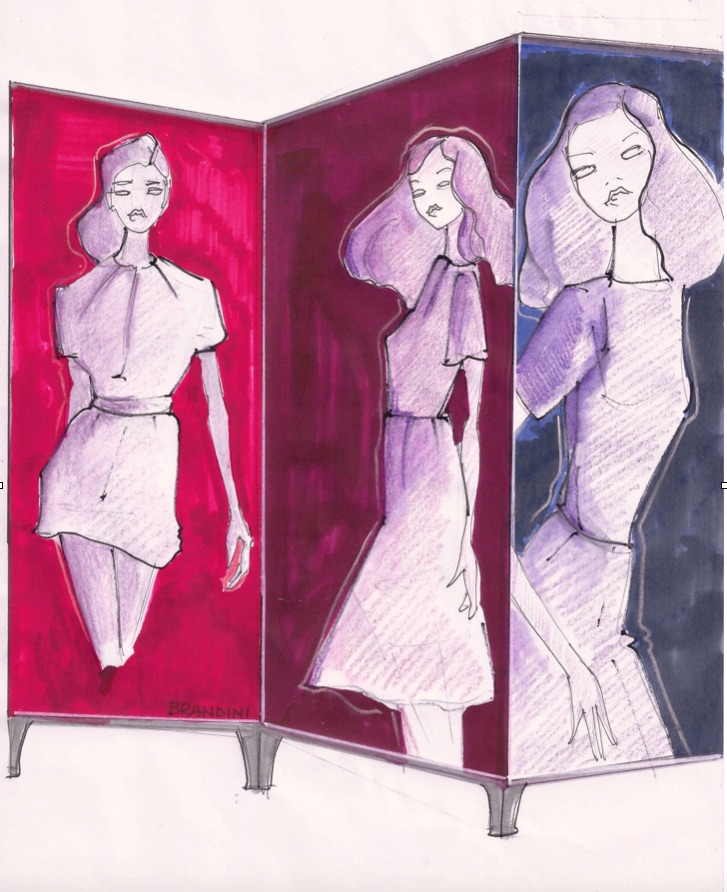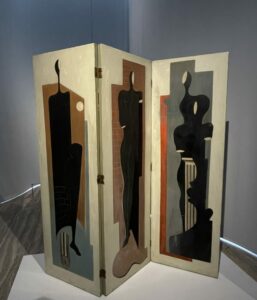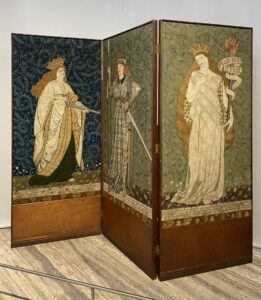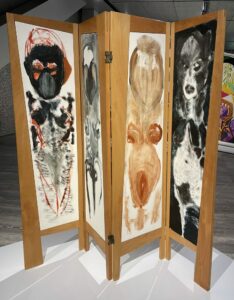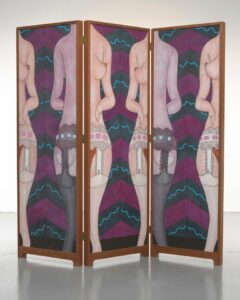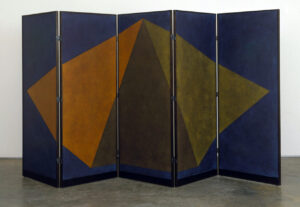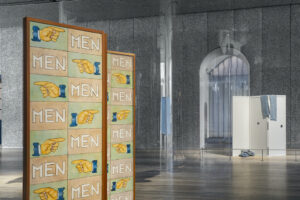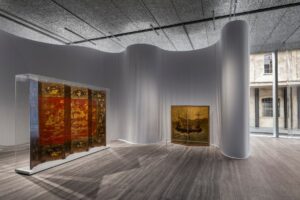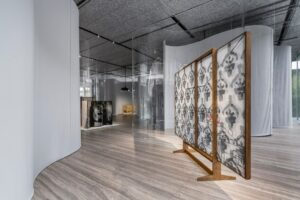“Paraventi: Folding Screens from the 17th to 21st Centuries”
“Fashion screens” by Beatrice Brandini
The exhibition “Paraventi: Folding Screens from the 17th to 21st Centuries” curated by Nicholas Cullinan is on display at the Fondazione Prada until 22 February 2024.
One of my favorites, Francis Bacon, Painted Screen, 1929
Located in the spaces of the Podium, the exhibition displays more than seventy works, ranging from traditional oriental screens from the 1600s, to reinterpretations by artists and architects such as Alvar Aalto, Le Corbusier, Pablo Picasso, Francis Bacon and many others.
William Morris (design), Jane Morris and Elizabeth Burden (realization), 1860-61
The origin of the screens dates back to China during the Eastern Zhou period, 771-256 BC, inside imperial palaces and temples; but it is the Japanese screens, known as Byõbu, that are the most famous and iconographic. They were characterized by a folding panel as protection from the wind (meaning of the word Byõbu), since this was precisely the original purpose, i.e. to shield the air currents in Japanese houses, notoriously characterized by an “open” architecture.
Marlene Dumas, Screens, 1984
Subsequently, Japanese screens were used for many other purposes, such as for tea rituals, as a backdrop for concerts and dances, and as enclosures for Buddhist rites. Furthermore, the samurai were inclined to display them inside their homes, and since they became a symbol of power and wealth, they began to embellish themselves with gold leaf and bright and colorful paints.
William N. Copley Konku, 1982
The spread of screens in Europe is linked to a historical fact, namely that in which a delegation of young Japanese, led by a Jesuit, gave Pope Gregory XIII a painted screen, an object that had not been seen in Europe until then. We are in the 16th century. Special screens are those collected by Coco Chanel, in the apartment on Rue Cambon alone there were eight.
Sol LeWitt Untitled Screen 1987
The exhibition at the Prada Foundation is divided into three different locations, that of Milan, but also in Shanghai and Tokyo, where the brand is particularly loved. In Milan there are seventy those hosted at the Podium in Piazzale Isarco, where the curator, Nicholas Cullinan, director of the National Portrait Gallery in London, selected them from private collections and museums from all over Europe. But among these wonderful ancient objects, there are also seventy screens commissioned for the occasion from eighteen artists, including Wade Guyton, William Kentridge, Laura Owens, Francesco Vezzoli, etc.
A glimpse of the exhibition at the Prada Foundation “Paraventi: Folding Screens from the 17th to 21st Centuries”
The exhibition is divided into seven sections/themes. Public/Private, in which the screens were the protagonists of a domestic dimension; Split Screens, in which these objects become the screen of a digital exercise; Queer, in which the screen becomes transgressive…. Up to the artist’s screens, the historical ones, the experimental ones.
Glimpses of the exhibition at the Prada Foundation “Paraventi: Folding Screens from the 17th to 21st Centuries”
A beautiful labyrinth in which the viewer understands that the screen is no longer a simple furnishing object but a sculpture or design object of incredible creativity and beauty.
Good life to everyone!
Beatrice


